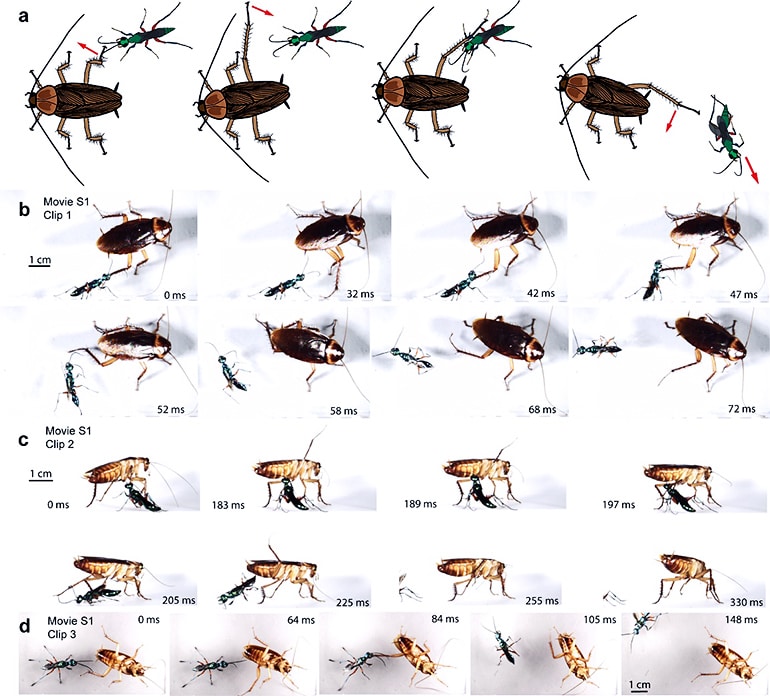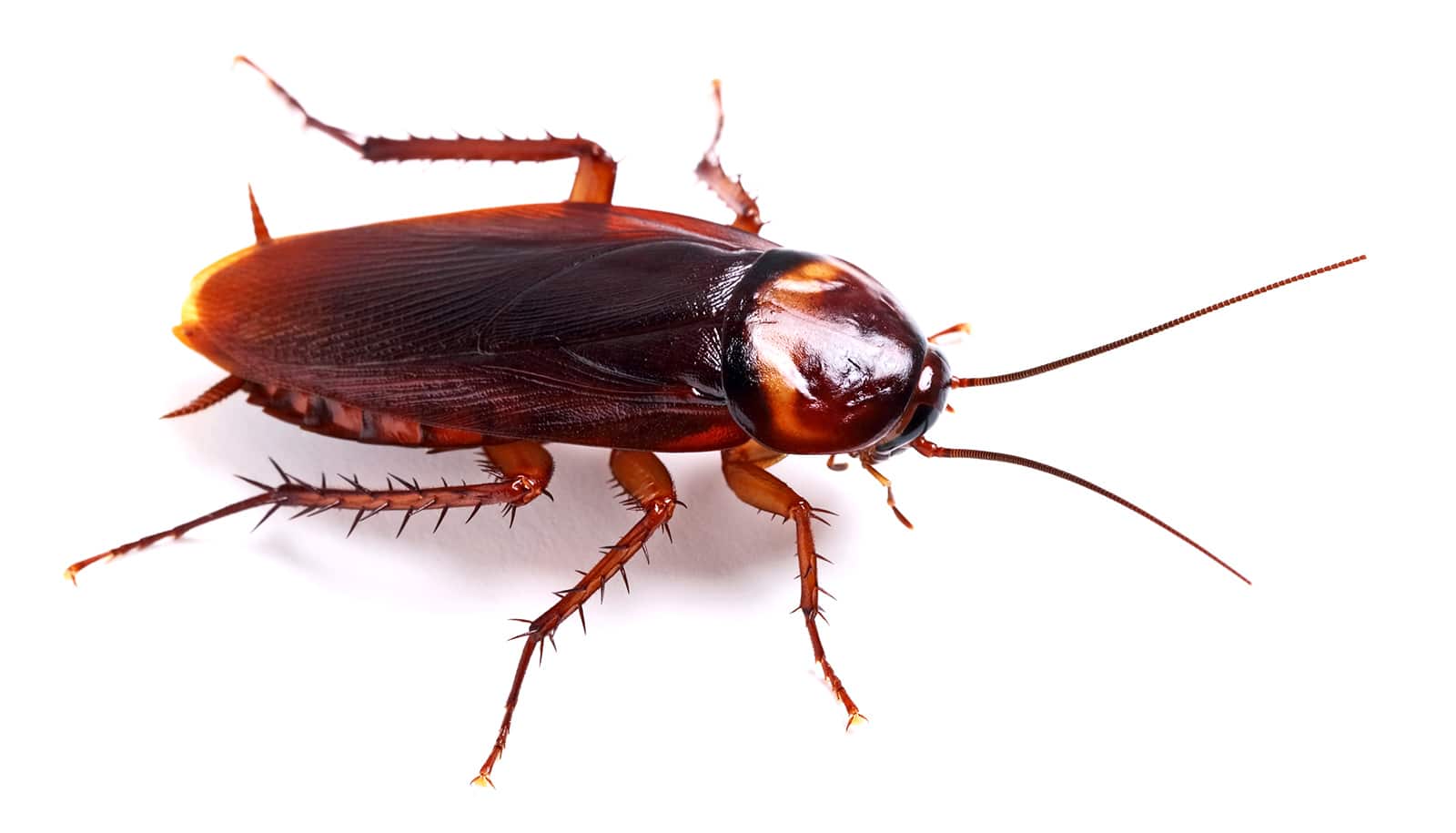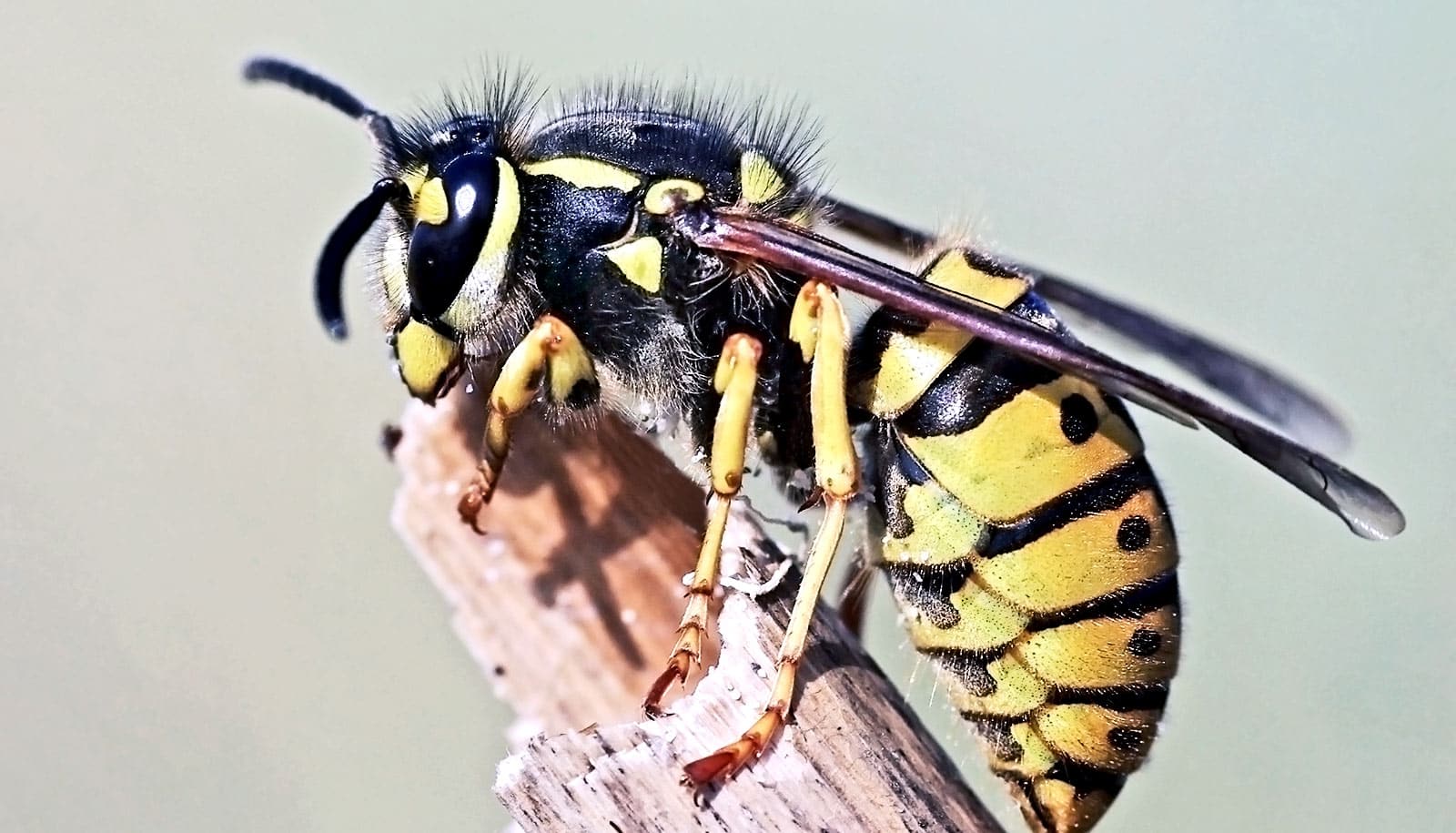When the American cockroach faces zombification at the sting of the emerald jewel wasp, it fights back, using its hind legs to deliver a powerful kick, according to new research.
A sting to the brain from the emerald jewel wasp turns the roach into a placid egg carrier and then larvae chow, so the kick can be the difference between life and a horrifying death.
Ken Catania, a professor of biological sciences at Vanderbilt University who studies interactions between predators and prey, read about cockroaches attempting to defend themselves from wasps, but no one had taken a close look at the behavior or its effectiveness.

Doing so required ultra-slow-speed videography to capture roaches using the mechanism time and again to prove and understand it. Catania saw that, before the wasp can get into position and deliver its sting, the cockroach uses a swift blow with a spiny back leg to deter its attacker.
The good news for the cockroach: the defense worked for 63 percent of adults that tried it. The bad news: juveniles almost always failed and got stung in the brain.
“It’s reminiscent of what a movie character would do when a zombie is coming after them…”
“The cockroach has a suite of behaviors that it can deploy to fend off the zombie-makers, and this starts out with what I call the ‘en garde’ position, like in fencing,” Catania says.
“That allows the roach to move its antenna toward the wasp so it can track an approaching attack and aim kicks at the head and body of the wasp, and that’s one of the most efficient deterrents. It’s reminiscent of what a movie character would do when a zombie is coming after them.
“The wasp usually figures out there’s a smaller and less defensive cockroach out there to be had.”
The research appears in the journal Brain, Behavior, and Evolution. The National Science Foundation supported the work.
Source: Vanderbilt University



